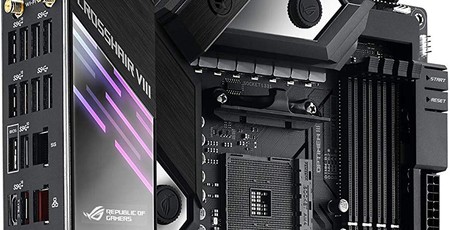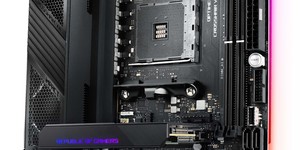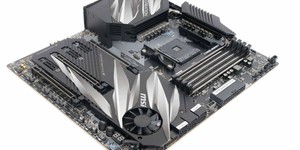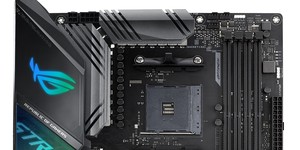Overclocking
We were hoping to match the 4.35GHz we achieved with the MSI Prestige X570 Creation and our Ryzen 9 3900X, but sadly even with our EKWB AIO unit, temperatures were too toasty, and lowering the voltage from our usual 1.425V saw our stress test crash before temperatures were lowered enough to pass, even after an extra step of adding loadline calibration to rule out vdroop. Still, 4.3GHz is the same as we saw with the Gigabyte X570 Aorus Master, so it's not as if the Crosshair has failed here, and there's every chance more time tweaking plus a later BIOS might allow for higher clocks - if a manual overclock is indeed what you want to do, as there's some evidence PBO might be a better route if lightly-threaded performance is more important to you.
Performance Analysis
We've seen a lot of variation in CPU-focussed benchmarks, especially with regards to boosting frequencies, and it seems the Crosshair is leaning more towards all-core boosting than single-core, given it was top dog in Blender and the Cinebench R20 multi-threaded benchmark but the slowest in the latter's single-threaded benchmark too. Similarly, it was the slowest in Far Cry 5, most notably on the average frame rate, as well as Time Spy.
Things will likely change over the next few weeks as motherboard manufacturers implement various tweaks in new BIOS versions, but unlike Gigabyte, which is currently working on BIOS fixes for its whiny chipset fan, the Crosshair's fan was quiet throughout testing.

Like the MSI Prestige X570 Creation, the Crosshair's CPU-powered USB 3.1 Gen 2 ports failed to work properly with our NVMe M.2 external caddie, but thankfully it includes a smattering of X570-powered ones too, including the Type-C port, which all worked flawlessly, reaching speeds of up to 934MB/s. As we mentioned in the MSI board review, the cause of this problem is currently unknown, but AMD and Sabrent (the manufacturer of our M.2 caddie) are investigating. Needless to say, if you're one of the growing numbers of people pairing PCIe 3.0 SSDs with these external enclosures, be sure to use the chipset-powered Gen 2 ports for now.
Audio performance is decent, but the MSI Prestige X570 Creation is the current king of the hill here, although the Crosshair did admittedly post one of the lowest THD levels we've ever seen, and the rest of the results will certainly be enough to allow most gamers and music fans to forgo any third-party audio hardware.
Power consumption was interesting, as it suggests the Crosshair is dishing out a fair few more electrons under load, which might explain the slightly higher CPU temperatures we saw when overclocking. Despite using the same vcore and frequency, it used 16W more than the Gigabyte board and 25W more than the higher-clocked, same vcore MSI board. Still, this isn't the end of the world and far from a fail.
Conclusion
The Crosshair VIII Formula ticks a heck of a lot of boxes when it comes to an extreme-premium enthusiast board, and while its price is definitely extreme, even for X570, it does offer an eye-popping feature set. The inclusion of a full VRM water block array means you're immediately saving around £100 plus time and effort doing this yourself with a third-party block, and Asus has clearly designed the board to be easy to work with and efficient in terms of layout too. However, harking back to our first-page comments, we don't feel Asus has gone quite far enough to justify the cost.
Sure, it has a decent power delivery, water blocks, an OLED display, elegant RGB lighting, and the hardware you need to control a powerful and extensive cooling system, but even recently, other Formula models have retailed at half the price and still offered similar features - the Maximus IX Formula is a case in point. This, plus the fact that we see some fantastically outlandish designs elsewhere in Asus' ROG product stack, even within the X570 family, means we just don't feel wowed by this board in the way we have in the past with the Formula considering it's the flagship X570 model and costs £600.

MSI MPG Velox 100R Chassis Review
October 14 2021 | 15:04









Want to comment? Please log in.